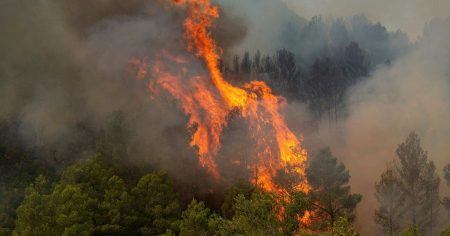The phrase ”Sometimes things go so wrong, they go right” encapsulates the unexpected trajectory of a bizarre climate conspiracy theory gaining traction in the final stages of the US election. This theory, despite its outlandish claims, has managed to penetrate mainstream political discourse, fueled by the rhetoric of both Donald Trump and Kamala Harris, albeit for vastly different reasons. This essay will delve into the specifics of this conspiracy theory, explore the motivations behind its propagation by both sides of the political spectrum, analyze its potential impact on the election and the broader public understanding of climate change, and discuss the dangers of politicizing scientific issues. Finally, we will consider the broader implications of this phenomenon for the future of political discourse and the fight against climate change.
The core of this particular climate conspiracy theory revolves around the notion that the government, or some shadowy cabal within it, is intentionally manipulating weather patterns, potentially through technologies like cloud seeding or other forms of geoengineering. Proponents of this theory point to unusual weather events, fluctuations in temperature, and even natural disasters as ”evidence” of this manipulation, claiming that these occurrences are either manufactured entirely or artificially amplified for nefarious purposes. These purposes, according to different interpretations of the theory, could range from controlling agricultural yields and manipulating public opinion to even weaponizing the weather against political enemies. While the specifics of the alleged manipulation vary, the underlying thread is a deep distrust of governmental authority and a belief in a hidden agenda driving climate-related events.
The theory’s propagation within the right-wing political sphere, often linked to existing distrust of climate science and government regulation, aligns with a broader narrative of skepticism towards established institutions. For some, it provides an alternative explanation for climate change, deflecting responsibility away from human activity and casting doubt on the scientific consensus. By attributing extreme weather events to deliberate manipulation, it reinforces the narrative of a deceptive government seeking to control the population. This resonates with pre-existing anxieties about government overreach and fuels a sense of victimhood, which can be politically mobilized. Trump, whether genuinely believing the theory or strategically exploiting it, has occasionally employed rhetoric that echoes these sentiments, thereby lending credibility to the conspiracy within his base.
Conversely, the engagement with this conspiracy theory from figures like Kamala Harris, while intended to debunk and ridicule it, might inadvertently contribute to its spread. The very act of addressing and refuting such claims can paradoxically amplify their visibility and give them an unwarranted air of legitimacy. The intention is to expose the absurdity of the theory and highlight the dangers of misinformation, but the risk is that it also introduces the concept to a wider audience who might otherwise have remained unaware. This highlights the complex challenge of combating misinformation in the digital age, where even well-intentioned attempts at debunking can backfire.
The potential consequences of this climate conspiracy theory extend beyond the immediate political context. By sowing distrust in climate science and government institutions, it undermines efforts to address climate change effectively. It can contribute to public apathy or even outright resistance to climate action, hindering the implementation of necessary policies and slowing down the transition to a sustainable future. Furthermore, it contributes to the broader erosion of trust in scientific expertise, which has far-reaching implications for public health, technological advancement, and societal progress as a whole. The politicization of science, where scientific findings are selectively embraced or rejected based on their alignment with pre-existing political beliefs, creates a dangerous environment where evidence-based decision-making is replaced by ideological battles.
Ultimately, the prevalence of this climate conspiracy theory underscores the fragility of truth in the digital age. The ease with which misinformation can spread and the difficulty in effectively countering it pose a significant challenge to democratic societies. Combating this requires a multi-pronged approach, including media literacy education, responsible reporting, fact-checking initiatives, and platform accountability. Furthermore, fostering critical thinking skills and promoting scientific literacy are crucial for empowering individuals to discern credible information from misleading narratives. Addressing the underlying social and political factors that contribute to the spread of conspiracy theories, such as feelings of alienation, distrust in institutions, and the search for simple explanations for complex issues, is equally important. The fight against climate change, and indeed the preservation of a functional democracy, depends on our ability to navigate this complex information landscape and uphold the value of truth and evidence-based decision-making.














